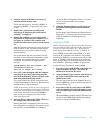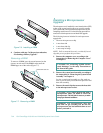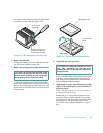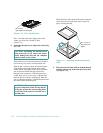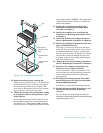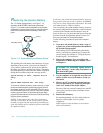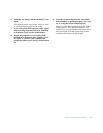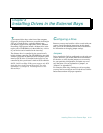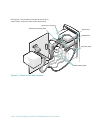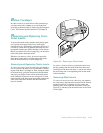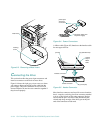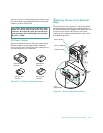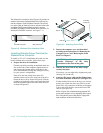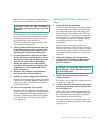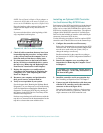
Installing Drives in the External Bays 8-101
Chapter 8
Installing Drives in the External Bays
The external drive bays at the front of the computer
(Figure 8-1) hold up to three user-accessible, half-height
5.25- or 3.5-inch devices—typically diskette, tape,
CD-ROM, or digital audio tape (DAT) drives. Standard
PowerEdge 2100 systems include a diskette drive in the
top bay and a CD-ROM drive in the middle bay. A drive
of your choice can be installed in the lower bay.
The diskette drive is controlled by the system board’s
built-in diskette controller. The CD-ROM drive provided
with the system and an additional small computer system
interface (SCSI) drive (if installed in the lower bay) are
controlled by the system board’s built-in SCSI controller.
NOTE: Dell PowerEdge 2100 systems support only SCSI
hard-disk drives in the internal drive bays. For more
information, see Chapter 9, “Installing Drives in the
Internal Bays.”
Configuring a Drive
Because you may need to tailor a drive to work with your
system, certain installation instructions in this chapter
refer you to the documentation that came with the drive
for information on changing jumper settings.
Jumpers
Drives installed by Dell are configured to work with your
system. However, you should check the documentation
for the drive to verify that the jumpers are set correctly
for your particular configuration, and make any neces-
sary alterations. (For an explanation of jumpers, see
“Jumpers” in Appendix B.)
For example, when daisy-chaining two drives together,
you may need to reconfigure one or both drives to differ-
entiate between them for proper operation.



